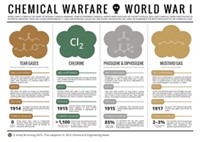Advertisement
Grab your lab coat. Let's get started
Welcome!
Welcome!
Create an account below to get 6 C&EN articles per month, receive newsletters and more - all free.
It seems this is your first time logging in online. Please enter the following information to continue.
As an ACS member you automatically get access to this site. All we need is few more details to create your reading experience.
Not you? Sign in with a different account.
Not you? Sign in with a different account.
ERROR 1
ERROR 1
ERROR 2
ERROR 2
ERROR 2
ERROR 2
ERROR 2
Password and Confirm password must match.
If you have an ACS member number, please enter it here so we can link this account to your membership. (optional)
ERROR 2
ACS values your privacy. By submitting your information, you are gaining access to C&EN and subscribing to our weekly newsletter. We use the information you provide to make your reading experience better, and we will never sell your data to third party members.
Environment
Plan Set For Syria’s Chemical Arms
Disposal: International effort is finalized to transport, destroy arsenal
by Glenn Hess
December 23, 2013
| A version of this story appeared in
Volume 91, Issue 51

The United Nations has confirmed that chemical weapons were used repeatedly in the Syrian civil war this year, and an international watchdog agency has unveiled an ambitious plan for destroying the stockpile at sea by mid-2014.
Syria agreed to surrender its chemical arms to avert threatened U.S. air strikes after global outrage over an Aug. 21 alleged sarin gas attack near Damascus, which killed hundreds of people including children. The UN has now confirmed the use of chemical weapons in this attack. The U.S. and its allies blamed Syrian President Bashar al-Assad’s regime for the atrocity.
The plan approved last week by the UN-affiliated Organisation for the Prohibition of Chemical Weapons (OPCW) will require the cooperation of multiple countries to remove and destroy Syria’s declared 1,290-metric-ton stockpile, which includes mustard gas as well as the ingredients for producing sarin and VX nerve agents.
The chemicals will be transported in Russian armored vehicles through the war zone, under Syrian military protection, to the coastal city of Latakia. There they will be loaded onto Danish and Norwegian freighters and taken to an unnamed port in Italy.
The arsenal will be transferred to a U.S. cargo ship, the MV Cape Ray, which will be equipped with two specially designed neutralization units. The U.S. military will use mobile Field Deployable Hydrolysis Systems to process the most dangerous chemicals, making them unusable as weapons (C&EN, Nov. 18, page 24).
In the next phase of the operation, less lethal precursors that are commonly used in industry will be shipped to commercial facilities around the world for destruction, according to the plan.
Meanwhile, a final report issued by a UN investigation team says there is “clear and convincing” evidence that sarin was used on a large scale against civilians in the rebel-held Damascus suburb of Ghouta on Aug. 21.
The panel of experts, led by Swedish scientist Åke Sellström, also concluded that sarin had likely been used on a small scale in three other alleged attacks in the towns Jobar, Saraqeb, and Ashrafiat Sahnaya. The inquiry only examined whether chemical weapons were used, not who used them.




Join the conversation
Contact the reporter
Submit a Letter to the Editor for publication
Engage with us on Twitter